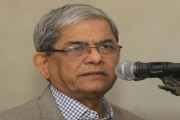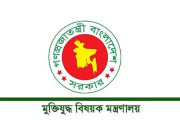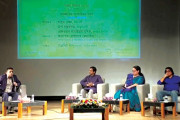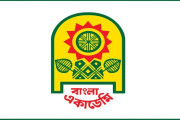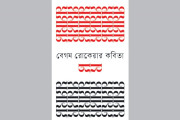The project is expected to be sustainable both financially and in terms of maintenance
Najifa Farhat: The proposed Kalyanpur Retention Pond project is being painted as an ecological breathing space in chaotic Dhaka, but its main purpose is to help with the capital’s waterlogging problem.
Sprawled across a whopping 182 acres of land, the Tk1,500 crore project aims to reduce waterlogging in Kalyanpur, Mohammadpur, Gabtoli, Darus Salam and a portion of greater Mirpur by helping with drainage and acting as a reservoir.
“When the project is finished, it will change the face of Mirpur forever,” said Iqbal Habib, environmental activist and architect of Vitti Sthapati, the consulting firm of the project.
What’s the plan?
The retention pond, besides acting as a functional drainage system, will be surrounded by a lakeside park consisting of walkways and footbridges, passive recreation for children and elderly, food courts, biological restoration, civic center, youth learning center and residential facility and rehabilitation project for the evicted.
The lakes near the retention pond are not being considered as those places are currently occupied by locals and some government organizations, including Bangladesh Agricultural Development Corporation (BADC). Moreover, a portion is being used as a depot of metro rail.
“We have learned from Dhanmondi lake; every inch of land has to be used for a walkaway or it will get grabbed again,” said Iqbal Habib.
He claimed that the navigation ability of the pond would be designed so that it could contain water for a minimum of 8-10 hours during the monsoon period.
Moreover, two pump stations would be installed at the two getaways of the pond which would drain the extra water into the Buriganga, he added.
He said that in the dry season, the water treatment plants would operate to treat the wastewater, meaning that the lake would not lose its appeal.
A ferris wheel, going by the name “The Dhaka Eye,” would be installed at the entrance point from Gabtoli, he added.
Special attention to introducing biodiversity
The main attraction of the project, however, is not the ferris wheel. What distinguishes this from other projects is the fact that unlike many urban constructions, it will focus on introducing biodiversity.
Among 11 zones of the project, five of them have been dedicatedly reserved for nature-based activities such as nature learning youth base camp; a biodiversity island with bee culture, butterfly shade and bird aviary; floodplain agricultural land and a solar aquatic park for water treatment.
All of these zones are connected by waterways and visitors can enjoy the experiences through boats.
At the learning center, youths will be trained on different aspects of the environment and they will receive first-hand experience of working with nature.
Responding to Dhaka Tribune’s queries on why such an emphasis on nature reservation was there, Habib said that people were no longer learning to co-exist with nature.
“This project will be a model on how we need to change the practice of urbanisation through keeping the environment intact,” he said.
A ‘self-sustaining’ entity
The project will not be funded by the government but rather by the Dhaka North City Corporation (DNCC).
The DNCC is expected to issue municipal bonds or “green bonds” in a bid to attract investments on the projects.
“The benefit of green bonds is that the interest rate on loans will be very minimal,” said DNCC Chief Executive Officer (CEO) Md Selim Reza.
He added that the Bangladesh Security Exchange Commission (BSEC) is currently studying the feasibility of this process.
The project is being designed to not just be sustainable financially but also be self-sustainable in terms of maintenance.
According to the consulting firm, Solar Aquatic Technology (SAS), the first of its kind in Bangladesh, will be used to treat the lake water for drinking water.
The water will be refined by using a balanced interaction of sunlight, water, oxygen, plants and solar aquatics.
In addition to that, the entire park will run with electricity generated from solar power.
However, it will be a while before Dhaka dwellers can see the plan being implemented.
The Dhaka North authorities are still finalizing the design of the project and it is likely to be presented to the Prime Minister in the first half of November.
“We are determined to get into work as fast as possible,” Reza said, adding that illegally built homes in the area still posed a problem and it was unlikely work would begin before 2022 even if everything went as planned. Source: Dhaka Tribune






















